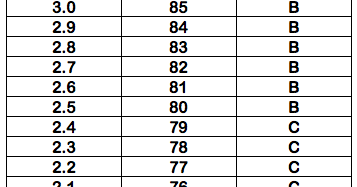

I just hope I don’t get a donkey for my course grade.” Reference A student relieved any remaining tension by noting, “I’m okay with the stickers. “Where are the grades?” “Did everyone get a sticker?” And then a student angrily yelled out, “What does a sheep mean?” Followed by, “How many points is a duck worth?” I tried to make the most of the moment: “And what makes you so sure you know what an A or 13 out of 15 points means?” An interesting discussion followed during which points were made about how grades didn’t mean the same thing in every course, how you can get a grade and have learned nothing, and how an improved grade motivates more work than the same grade. Some students got ducks, others sheep, a few cows, and a couple donkeys. I was reminded of the time I decided to pass back a set of papers in Developmental English with animal stickers instead of grades. The more significant finding grows out of the potential of seemingly small policy and practice decisions to influence how students experience grades, and many of those small decisions rest with teachers. One study does mandate letter grades instead of percentages. The findings feed into concerns that many of us have about numeric grading systems and how they create token economies where every course activity must earn credit, where students shamelessly grub for points, and where teachers face agonizing decisions when percentages or points must translate into grades.

In a percentage-score format, self-affirming information is more elusive” (p. The researchers theorize that “with only 12 possible letter grades, the chances for the feedback to match students’ views of themselves are great, and such a match would contribute to self-concept clarity and self-esteem. Overall, students derived greater pleasure from letter grade feedback than percentage scores” (p.

“This research tested and found that two commonly used grade categorizations systems solicited significantly different emotional responses from students. In a second study, students received either a letter grade or percentage score on an assignment that actually counted in their course grade. The researchers then compared ratings for the 12 categories of letter grades (A to F with pluses and minuses from A- to D-) with 12 ranges of percentage scores (94–100 down to 0–59). Would they experience more pleasure if they received a letter grade or a percentage score? This understanding of pleasure grows out of positive psychology theories and rests on the notion that a positive response to a grade can promote wellness. So, does getting a letter grade or a percentage score affect how students experience the event? In the first of two studies, students were asked to imagine receiving feedback on a midterm in a course important to their major. Percentage scores and points-based grading systems share this granular characteristic. Each percentage point is a “bucket,” and we would expect little to no variation within each bucket because the score is an exact number. Letter grades are coarser than percentage scores because each letter grade is a “bucket.” Within each bucket, some variation in quality is permitted-the letter grade is a rough indicator of quality. They describe coarseness as a “distinguishing characteristic” of grading systems: “This research study examines whether feedback format (i.e., coarseness) makes a significant difference on how much pleasure students experience from their feedback” (p. That’s why I found Ruppert & Hoption’s (2021) research of interest.

Teacher can’t do much about the external realities that underscore the importance grades, but they do control the policies and practices associated with their use of grades.
#Letter grade percentages how to#
For teachers the question is how to help students arrive at a healthier understanding of why grades do and don’t matter. Learning outlives grades across the board.
#Letter grade percentages professional#
They don’t assess ability or predict personal or professional success. Grades do not measure the worth of a human being. A survey of employers conducted by the National Association of Colleges and Employers in 2019 found that over 70 percent of them screen candidates for positions using their GPA (as cited in Ruppert & Hoption, 2021).Įven so, students care too much about grades. Students have to care about grades scholarships and financial aid link to them.


 0 kommentar(er)
0 kommentar(er)
